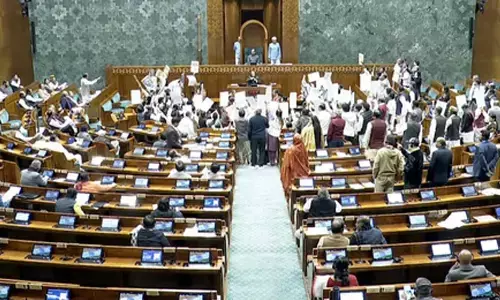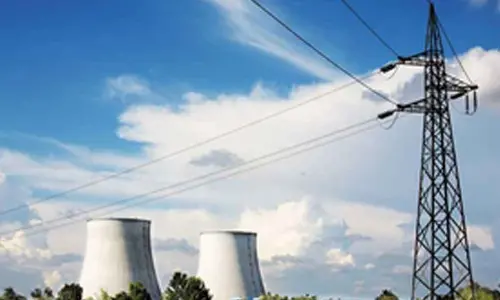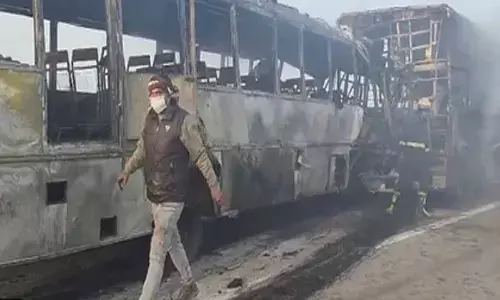Why plans for redrawing the Middle East will fail?

Condoleezza Rice, the former US Secretary of State, was the first person to ever use the term ‘the New Middle East’ during a public address in Tel Aviv back in June of 2006.
Condoleezza Rice, the former US Secretary of State, was the first person to ever use the term ‘the New Middle East’ during a public address in Tel Aviv back in June of 2006. She had opted to use this new concept, instead of the more popular ‘Greater Middle East’. Interestingly enough, soon after that speech a retired US Army Lieutenant Colonel, Ralph Peters showed what this new term meant with a map in his book entitled ‘Never Quit the Fight’ that was released on July 20, 2006.
Lt. Col. Peters is a former high-ranking Defense Department officer, whose ideas are widely sought after by military circles. He worked as a Deputy Chief of Staff for Intelligence of the US Army and he's written various books and articles on foreign policy and strategy. Although the US Defense Department never officially accepted Lt. Col. Peters’s map, it is a known fact that the map is currently being used in a training program in NATO’s Military College.1
This map, which could be considered the latest one in a series of maps that sought to redesign the Middle East over the past century, shows the final state of the region that certain Western circles desire to see. The New Middle East Map, in other words, the final stage in the Greater Middle East Project, is almost like a 21st Century version of Sykes-Picot, a secret treaty signed with the intent on sharing the former Ottoman lands after WWI. It also corroborated the accuracy of certain theories, which up until then seemed like just conspiracy theories. Apparently, in the final stage of the project, the respective parties didn't care as much about hiding their true intentions.
The borders predicted by the 2006 map seem eerily close to the truth today; in fact, so much so the journal ‘The Atlantic’, decided to feature the map again on June 19, 2014 with an ominous title ‘The New Map of the Middle East", only years after covering it in a 2008 issue. The journal even claims that the separations predicted by the map are inevitable.
The name Greater Middle East Project was first used by the Bush administration, the 43rd US President, and was discussed during the G-8 summit in 2004. However, it wasn't a new concept; on the contrary, it was just a new name for an old, long-term project that first began in the late 19thCentury.
The project extended to Morocco in the West, Pakistan in the East, the Black Sea coasts of Turkey in the North, and Yemen in the South: In other words, the most volatile, or ‘the most tampered, the most provoked and most easily-ignited region of the world’, scene to countless wars, conflicts, military coups, separatist moves, terror and instability. Another important thing about the region is that it houses the largest, most central and most strategic part of the Islamic world.
Although the implementation and publicization methods have varied from time to time, neither the essence nor the true goal of the project has ever really changed. Since the beginning, its main purpose, determined by certain deep states of Western countries, has been to prevent an Ottoman-style union and alliance between the regional countries and peoples, thus ultimately preventing a Union of Islam. Surely, the hopes of obtaining control over the natural resources and natural wealth of the region came as an added bonus. Furthermore, the prospect of getting astronomical deals for certain arms dealers, due to relentless wars and conflicts, wouldn't hurt either.
By the end of the 1800s, after the Ottoman administration made a deal with the German Deutsche Bank to extract oil in Mosul and Kirkuk; the British immediately built an indirect partnership with the said Germany company in order to be a part of the Middle East oil scene. The fastest developing country of the era, the USA, was soon to follow. In other words, the eyes of the West suddenly turned to the rich oil sources in the Middle East, just as the Ottoman Empire was struggling to stay alive.
Before late, Britain and France parceled out the former Ottoman lands in the Middle East, marking the first official and wide-scale step towards the Great Middle East Project. Following that, the project was implemented gradually until today, despite countless revisions, modifications, improvements and changes.
The decision passed by the US Congress in 1957, widely known as the ‘Eisenhower Doctrine’, but originally called ‘Preserving the Peace and Stability in the Middle East’ had the same approach to the Middle East as today’s GMEP. In fact, the phrase ‘New World Order’ used by former US President George H. W. Bush in a press conference in August 1990, was nothing other than a fresh attempt to familiarize the public with the GMEP. The ‘Clash of Civilizations’, the famous work of Samuel Huntington, a political analyst and a former advisor to US Department of Defense, in the journal Foreign Affairs, also laid the philosophical foundations of the ongoing Greater Middle East Project. This piece, published in 1993, was later turned into a comprehensive book shaped around the same ideas.
"The Project for the New American Century", PNAC, a Washington DC based think-tank that operated between 1997-2006 and known for their advisory roles in military policies, the Iraq War and national security, and known for their lobbying efforts among high-ranking US officials, was also amongst the top theoreticians behind the ‘New World Order' and ‘GMEP’. Gary Schmitt, the former director of PNAC, said that they no longer needed to carry on and they had already done their job and made the government accept their views.
Indeed, that year, the said ‘New Middle East’ concept and the detailed map of this new Middle East surfaced. It was followed by the Arab Spring that pushed many Arab countries into an era of relentless turmoil including Syria, Libya, Yemen and others. Undoubtedly, the Arab Spring marked another serious step towards the realization of the map.
Many Western deep states believe that they are getting closer to achieving the map that has been their dreams for centuries now. However, one thing is certain: dreams and covert plans do not always go as planned. The history is full of sinister plans that took a lot of effort to build, but went awry nevertheless.
It is entirely possible that more challenges are ahead for the Middle East. Yet, the complete sundering of the Islamic world and a subsequent prevention of the Islamic Union is not to be found in destiny. There might be difficulties and problems, but the map that will come out of it is likely not going to be one the certain deep states have been hoping for.
1- www.globalresearch.ca/plans-for-redrawing-the-middle-east-the-project-for-a-new-middle-east/3882
2- en.wikipedia.org/wiki/Project_for_the_New_American_Century
By Harun Yahya
The writer has authored more than 300 books translated in 73 languages on politics, religion and science. He may be followed at @Harun_Yahya and www.harunyahya.com



















